Tree Maintenance
-
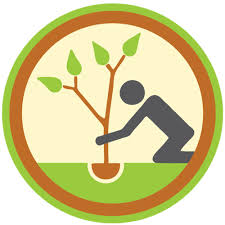
Montgomery County plants approximately 2000 trees per year to replace trees that have been removed from the public right-of-way. Read more...
-
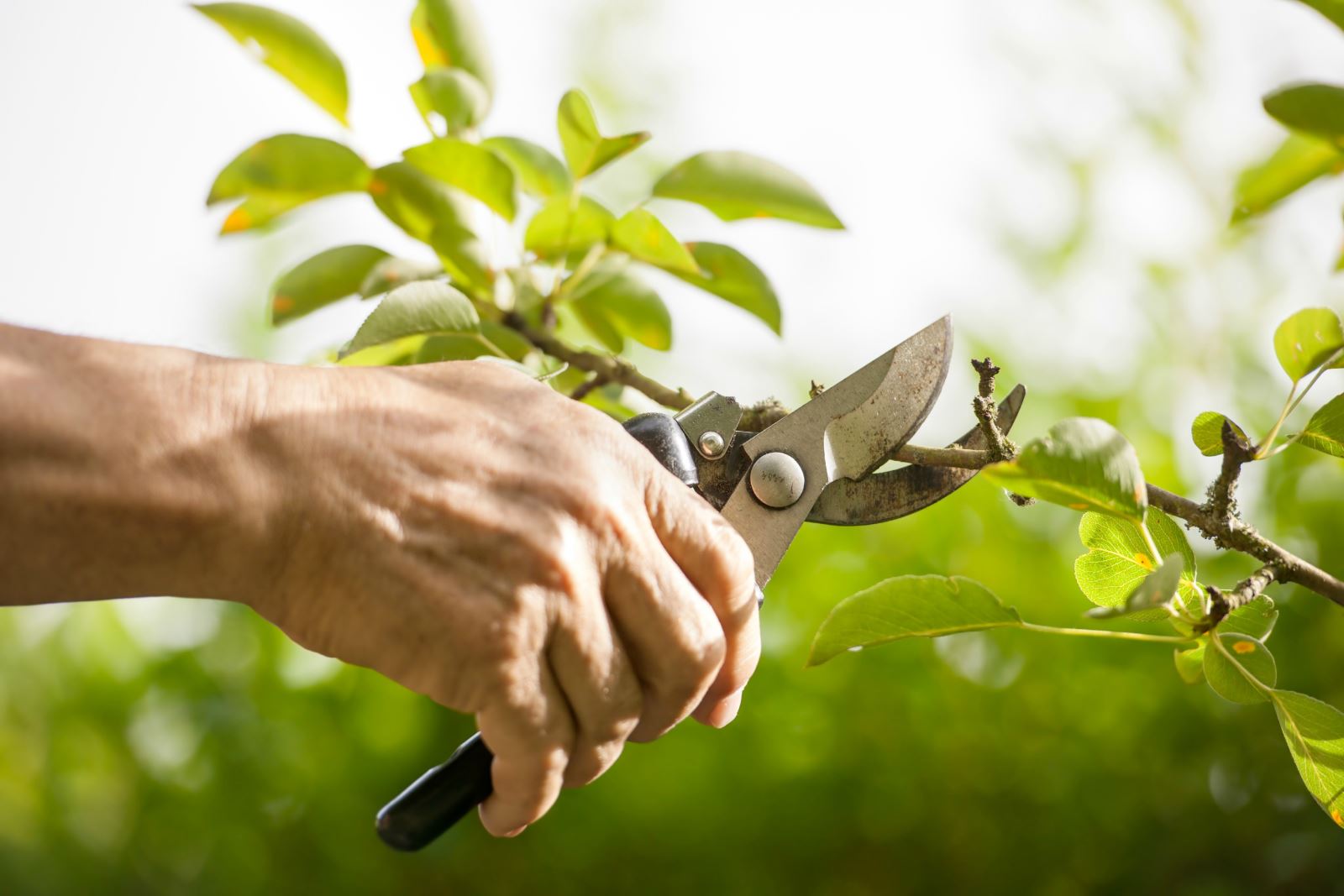
Pruning a tree is removing specific branches to benefit the whole tree. Read more...
-
.jpg)
Trees are removed for a number of reasons including death of the tree, structural defect, declining health, etc. Read More...
-
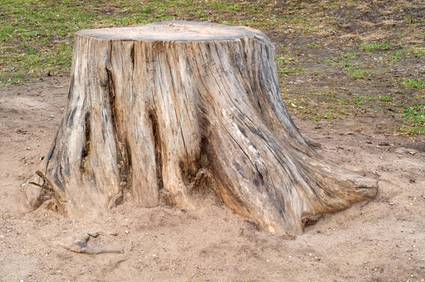
Stump removal consists of the mechanical grinding of the stump and those exposed roots radiating from the stump out to where the roots first enter the ground. Read more...
MCDOT Division of Highway Services maintains over 250,000 trees in the dedicated county right of way and another 200,000 in rural areas. Any tree growing in a street right-of-way is a county-owned tree. Note that it is not always obvious where the street right-of-way ends and private property begins. The line can be several feet into a front yard beyond the edge of the sidewalk or street. The county is responsible for the health and maintenance of county-owned trees and the Department of Transportation is the agency in charge. Permits from both the state's Department of Natural Resources and County's Department of Permitting Servces are required prior to a private property owner doing anything that impacts a county owned tree.
Request to Plant a Street Tree Online
Request to Inspect, Remove, or Prune County Trees online
Roadside Tree Protection Law - Department of Permitting Services (PDF)
Street Tree Protection Law 41-12 (PDF)
Youtube video of MCDOT at work!
Tree Planting

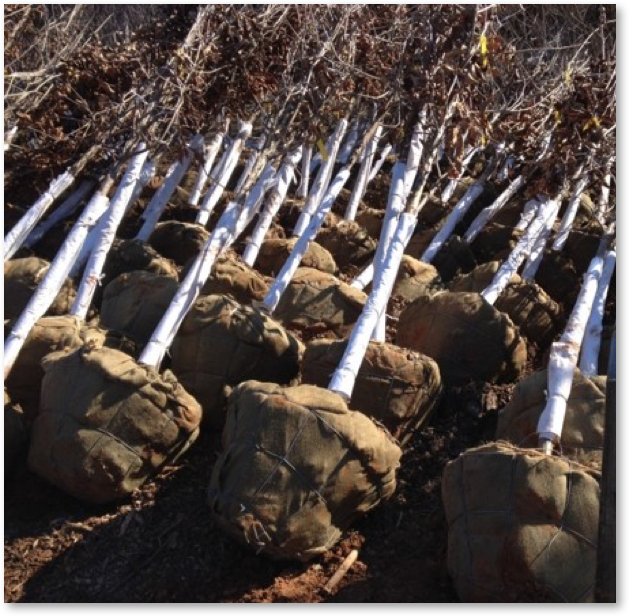
Montgomery County plants approximately 2,000 trees per year . Trees are replaced by the County on a request basis. If you desire a tree be planted in the right-of-way, you can request a street tree online using the link below or by calling the County’s 311 call center by dialing 3-1-1 (inside Montgomery County) or (240) 777-0311 (outside of Montgomery County). A County arborist will inspect the property for appropriate species and location.
Request to Plant a Street Tree online
New Street Tree Care Information (en español)
MAJOR TREES (Taller Species)
Acceptable major trees shall be 8' to 12' tall and have a minimum trunk caliper of 1 3/4" - 2" as measured 6" above ground level. They shall be branched at a point approximately 60% of the total height of the tree above ground. Major tree species will grow to a minimum of 40’ at maturity.
| Scientific Name | Common Name | Height | Canopy Spread |
|---|---|---|---|
| Celtis occidentalis | Hackberry | 40’-50’ | 40’-50’ |
| Cladratis kentukea * | Yellowwood | 30’-50’ | 40’-50’ |
| Fagus grandifolia | American Beech | 50'-90' | 50'-75' |
| Gymnocladus dioicus | Kentucky Coffeetree (male, seedless) | 60'-75' | 40'-50' |
| Liquidambar styraciflua | Sweetgum (fruitless) | 65’-75’ | 40’-50’ |
| Nyssa sylvatica | Blackgum | 40’-70’ | 35’-45’ |
| Platanus x acerifolia | London Planetree | 70’-80’ | 55’-65’ |
| Quercus lyrata | Overcup Oak | 45'-55' | 45'-55' |
| Quercus bicolor | Swamp White Oak | 60’-80’ | 50’-80’ |
| Quercus macrocarpa | Bur Oak | 70'-80' | 70'-85' |
| Quercus muehlenbergii | Chinkapin Oak | 40’-60’ | 50’-70’ |
| Quercus rubra | Northern Red Oak | 60’-80’ | 45’-60’ |
| Quercus phellos | Willow Oak | 60’-75’ | 40’-60’ |
| Styphnolobium japonicum * | Japanese Pagoda Tree | 40’-70’ | 30’-40’ |
| Taxodium distichum | Baldcypress | 50'-70' | 30'-35' |
| Tilia tomentosa | Silver Linden | 50’-60’ | 50’-60’ |
| Tilia americana | American Linden | 50’-80’ | 30’-50’ |
| Ulmus americana | American Elm | 60'-80' | 30'-50' |
| Ulmus parvifolia | Lacebark Elm | 40’-45’ | 45’-50’ |
| Zelkova serrata | Zelkova | 50’-60’ | 50’-60’ |
* denotes a flowering tree
MINOR TREES (Shorter Species)
Acceptable major trees shall be 8' to 10’ and have a minimum caliper of 1" - 1 1/2" measured 6" above ground level. Minor tree species grow to a maximum of 35’. Minor species are only planted directly under power lines.
| Scientific Name | Common Name | Height | Canopy Spread |
|---|---|---|---|
| Acer buergerianum | Trident Maple | 30’-35’ | 25’-35’ |
| Acer ginnala | Amur maple | 15'-20' | 15’-25’ |
| Amelanchier laevis * | Serviceberry (single stem) | 25’-35’ | 15’-30’ |
| Carpinus caroliniana | American Hornbeam | 20’-40’ | 20’-30’ |
| Cercis canadensis * | Eastern Redbud | 20’-30’ | 15’-30’ |
| Chionanthus retusus * | Chinese Fringetree | 10’-20’ | 10’-20’ |
| Cornus florida * | White Flowering Dogwood | 20’-30’ | 20’-30’ |
| Cornus florida ‘rubra’ * | Pink Flowering Dogwood | 20’-30’ | 20’-30’ |
| Cornus kousa * | Kousa Dogwood | 15’-20’ | 15’-20’ |
| Crataegus viridis | Green Hawthorn | 20’-35’ | 20’-35’ |
| Koelreuteria paniculata * | Goldenraintree | 30’-40’ | 30’-40’ |
| Magnolia virginiana * | Sweetbay Magnolia | 10’-35’ | 10’-35’ |
| Malus x * | Flowering Crabapple | 20’-25’ | 15’-20’ |
| Ostrya virginiana | Ironwood | 25'-40' | 20'-30' |
| Parrotia persica | Persian Parrotia | 20'-40' | 15'-30' |
| Pistacia chinensis | Chinese Pistache | 30’-35’ | 20’-30’ |
| Prunus virginiana 'Schubert' * | Purple-leaf Chokecherry | 20’-30’ | 20’-30’ |
| Prunus x incamp 'Okame' * | Okame Cherry | 15’-25’ | 15’-20’ |
| Syringa reticulata * | Japanese Tree Lilac | 20’-25’ | 15’-20’ |
* denotes a flowering tree
Tree Pruning

The Tree Maintenance Section prunes over 10,000 trees in the right-of-way every year. Trees are trimmed to remove hazardous (dead wood, diseased branches, etc.) branches and to train the growth of young trees. Trees are also trimmed to maintain adequate clearance for vehicles and pedestrians generally 12' to 14' over the road and 8' over the sidewalk. Branches obscuring traffic signals stop signs and other traffic control devices are also removed. Our goal is to trim trees to maintain them and, if possible, to improve their health and appearance.
Upon receipt of a request to trim a tree, an inspection order is generated. Unless an emergency situation is indicated, inspection of the request occurs the next time a County Arborist does routine inspection in the neighborhood. Upon inspection, the work needed, if any, is prioritized based on its severity. Work that has the greatest potential to adversely affect public safety receives the highest priority. Work orders are created following inspection, with those work orders having the highest priority being assigned to crews first.
If you feel that a tree growing on a County maintained right-of-way is in need of pruning, please request an inspection online using the link below or by calling the County’s 311 call center by dialing 3-1-1 (inside Montgomery County) or (240) 777-0311 (outside of Montgomery County).
Request to Prune County Tree online
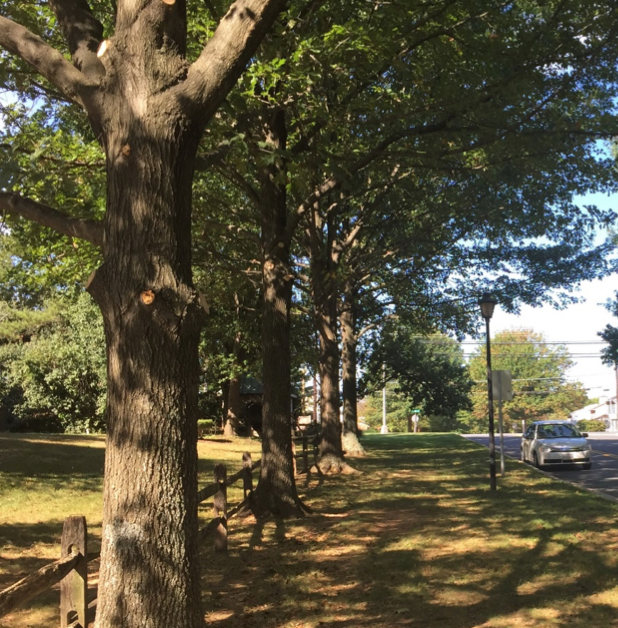
Trees are also trimmed by the various utility companies, most commonly PEPCO, BGE, and First Edison in order to provide clearance from energized lines. This activity is not regulated by Montgomery County. Montgomery County does not prune trees for utility line clearance. Questions regarding this type of trimming should be directed to the appropriate utility company. Utility clearance is regulated by the public service commission via COMAR 2012.
Tree Removal
.jpg)
Trees are removed for a number of reasons including death of the tree, structural defect, declining health, etc. Requests to remove a tree from the public right of way should be made to the Division of Highway Services. Trees are inspected by County Arborists to determine if the tree should be removed and the priority it should receive. Occasionally, trees that require removal have power lines in close proximity to parts of the tree. In this case, the removal of the tree must be coordinated with the appropriate utility, which can add to the length of time required to affect the removal of the tree. If you feel a tree in the county right-of-way is in need of removal, please request an inspection online using the link below or by calling the County’s 311 call center by dialing 3-1-1 (inside Montgomery County) or (240) 777-0311 (outside of Montgomery County).
To report a tree in the county right of way that needs to be removed, create a service request through 311.

Current wait for tree removal : 15-18 months
Upon receipt of a request to remove a tree, an inspection order is generated. Unless an emergency situation is indicated, inspection of the request occurs the next time a County Arborist does routine inspection in the neighborhood. Upon inspection, the work needed, if any, is prioritized based on its severity. Work that has the greatest potential to adversely affect public safety receives the highest priority.
Removal of tree stumps generated by tree removals will occur at a later date. See our stump removal page for more information.
Trees will be replanted if the resident requests us to do so. See our tree planting section for more information.
Stump Removal
.png)
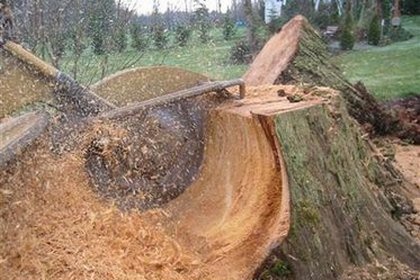
Upon removal of a tree, the remaining stump, if any, is automatically documented in our asset inventory system for future removal. Removal consists of the mechanical grinding of the stump and those exposed roots radiating from the stump out to where the roots first enter the ground. The stump and roots are ground to a depth of 6" below the surrounding ground level. The wood chips are removed and the hole filled with a topsoil mixture and the surface seeded with grass. The dirt is left mounded slightly to allow for settlement as the remaining underground portions of the stump decay. It is helpful for the establishment of the grass to water the seeded area until the grass is established.
Stumps may not be removed if the removal activities would damage other trees’ root systems, utility infrastructure in the right-of-way, or other special circumstances.
Tree Preservation
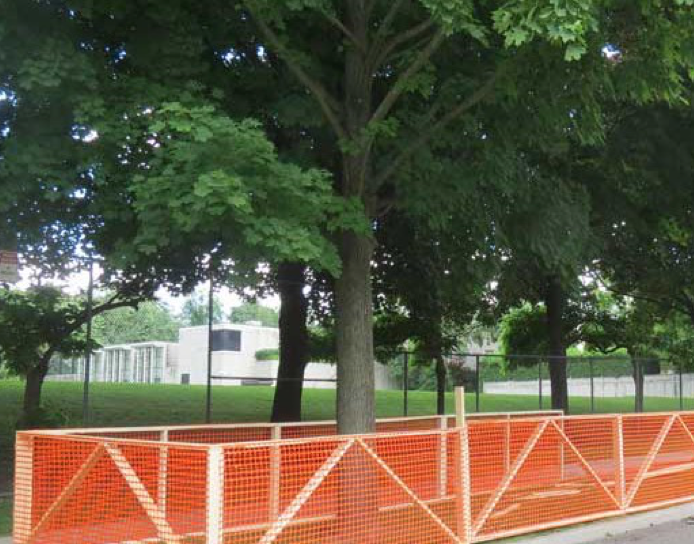
Street trees are a vital part of the county’s green infrastructure. If unprotected, trees can be significantly damaged by construction activities in the right-of-way. The Tree Maintenance Section ensures that this damage is minimized or prevented all together. Trees are proactively pruned to ensure the canopies of trees will not be damaged by construction traffic. One of the tree protection measures is to erect fencing around the tree and the associated critical root zone. This prevents damage to tree roots and prevent soil compaction.
The Tree Maintenance Section creates tree protection plans for Montgomery County Department of Transportation projects. This includes the Division of Traffic Engineering, the Division of Transportation Engineering, and the Division of Highway Services. More information on ongoing or planned projects can be found on their respective websites.
The Montgomery County Roadside Tree Protection Law (PDF) was legislated to create additional protections for trees in the Montgomery County right-of-way. These changes went into effect March 2014.
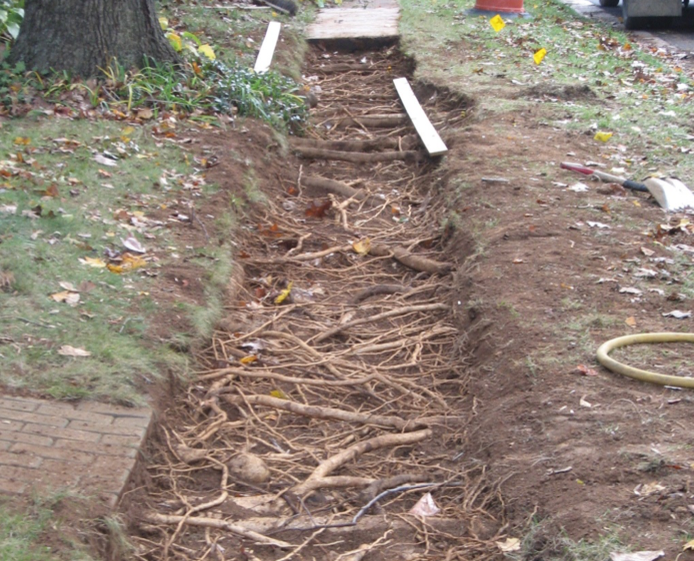
If you suspect a violation of the Roadside Tree Law is taking place, you may file a complaint with the County Department of Permitting Services (DPS) online using the link below or by calling the County’s 311 call center by dialing 3-1-1 (inside Montgomery County) or (240) 777-0311 (outside of Montgomery County).
Arbor Day
Arbor Day in Maryland is the first Wednesday in April, and National Arbor Day is the last Friday in April. You can find more information on the Arbor Day Foundation website.

Emerald Ash Borer

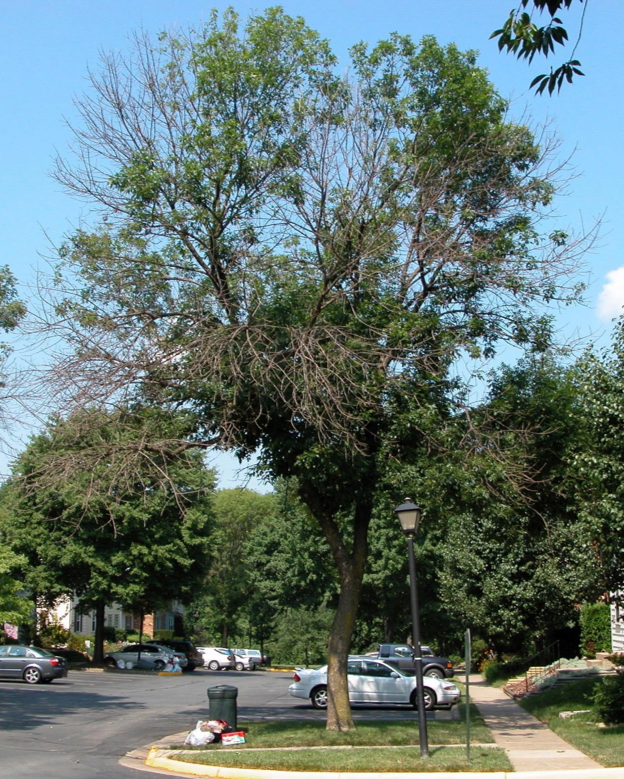
Emerald Ash Borer (EAB) is an invasive beetle originally native to East Asia. Since its introduction to the United States in 2002, EAB has caused the decline and death of millions of North American ash trees. First detected in Montgomery County in 2012, EAB is causing the widespread decline of ash trees in the County right-of-way. Typically, EAB will kill an ash tree in 1-5 years after infestation. The only street trees infested by EAB are ash trees (genus Fraxinus). All other species of tree found in the County right-of-way, such as oak and maple species, are not affected by EAB.
All ash trees will eventually die from EAB unless treated. Unfortunately, widespread treatment is costly and not sustainable for the thousands of ash trees in the County right-of-way. Ash trees in the County right-of-way affected by EAB will be removed as their health declines. Replacement trees will be replanted in the right-of-way at the request of residents. Only non-susceptible tree species will be planted in the right-of-way.
If you suspect a tree in the right-of-way is infested with EAB, please request an inspection online or by calling the County’s 311 call center by dialing 3-1-1 (inside Montgomery County) or (240) 777-0311 (outside of Montgomery County). Tree Maintenance does not inspect trees on private property for EAB. If you suspect a tree on private property has EAB, please contact a tree care company with a certified arborist on staff.
Request to Inspect County Tree Online